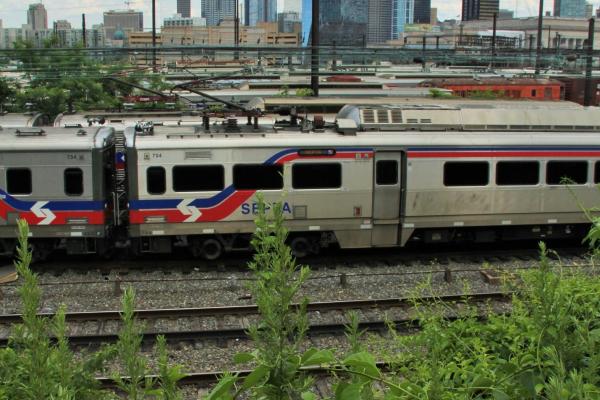Drexel’s Chestnut Square fronting the Creese Student Center.
Beginning in the mid-1990s, Drexel University rebounded from financial and reputational decline to become a thriving, multifaceted hub of education and urban revival.
Beginning in the mid-1990s, Drexel began a period of revitalization that reinvented the University following a previous period of decline. The change was thanks largely to the visions of two university presidents—Constantine Papadakis and John Fry. Papadakis, Drexel’s charismatic president from 1995–2009, used his exceptional managerial and fundraising skills to transform what had been a failing, demoralized institution into a vital center for education. He rebranded and successfully marketed Drexel with a wildly successful student-recruitment strategy that nearly doubled the University’s enrollments. Under Papadakis, Drexel opened medical and law schools and constructed new research buildings. Papadakis’s successor, Fry, 2010–present, built on and expanded Papadakis’s agenda to include community economic and educational development, upward and eastern expansion of the campus, and commercial redevelopment initiatives in the campus area.
Stories in this Collection
|
1995–2008 Drexel’s 12th president Constantine Papadakis (1995–2009) transformed the University from a nearly bankrupt, demoralized institution into a vital hub of education and urban revival. Governing Drexel as an entrepreneurial CEO, Papadakis restructured the University’s finances and administrative operations. He adopted a wildly successful marketing strategy that rebranded Drexel as student-centered and focused on three essentials to bolster enrollments: “co-op, urban location, technology.” Under Papadakis, a charismatic fundraiser, Drexel created medical and law schools and put up new research buildings, one of which honors his memory. |
 2010–2018 John Fry, Drexel’s president since 2010, adopted a conciliatory approach to the University’s relationship with Powelton Village—the University’s 2012 master plan, which involved the participation of students, faculty, and community residents, called for Drexel’s building upward in the campus core, not outward in Powelton Village. In 2014, Fry’s leadership team unveiled a visionary plan for a University City “Innovation Neighborhood,” which would include an eastward expansion of the Drexel campus. |
2010–2018 In the 2010s, Drexel University, in partnership with private developers, began a boom of construction projects, mainly mixed-use commercial buildings developed in partnership with private developers and involving land-lease and management contracts. Spanning the 3200 block of Chestnut Street, Chestnut Square featured two eight-story buildings that flanked the Creese Student Center, with upscale restaurants and retail businesses operating at street level. The Summit, a spectacular residential tower opened on Lancaster Avenue at Drexel in 2015, and an innovative hotel–restaurant building, the Study, opened on Chestnut Street in 2017. Opened in the spring of 2017 on the high ridge of Drexel’s eastern boundary was the mixed-use, 16-story Vue32 tower. The revenue for these commercial projects is heavily dependent on students. |
 2010–2018 Drexel launched two initiatives in the 2010s to strengthen neighborhood community development. One initiative was the fall 2016 opening of a public, university-assisted middle school, developed through a partnership with the School District of Philadelphia’s Science Leadership Academy (SLA). The new school was temporarily housed in Drexel’s Dornsife Center for Community Partnerships. Opened in 2014, the Dornsife Center is the hub for Drexel’s initiative to support economic development in Mantua. |